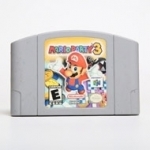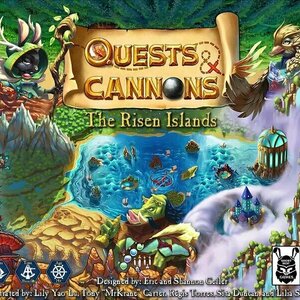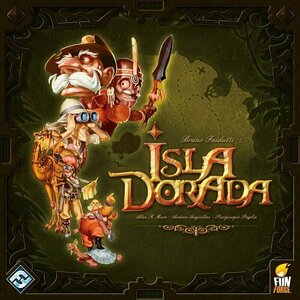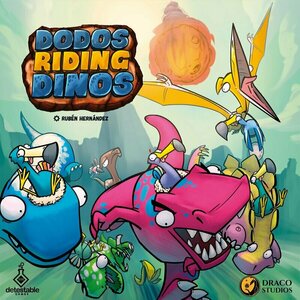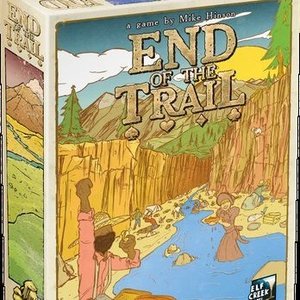
End of the Trail
Tabletop Game
End of the Trail is a competitive card game for 1-4 prospectors and fortune seekers. Players manage...
BoardGames 2018Games WildWestGames
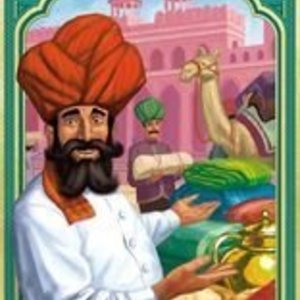
Jaipur
Tabletop Game
Jaipur, capital of Rajasthan. You are one of the two most powerful traders in the city. But...
Boardgames Cardgames FamilyGames
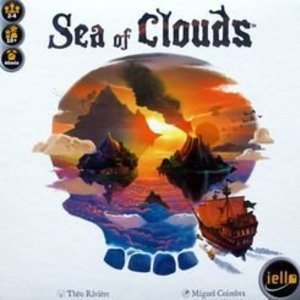
Sea of Clouds
Tabletop Game
In Sea of Clouds, as captain of a flying pirate ship, recruit a cutthroat crew, collect relics and...
Boardgames Pirategames
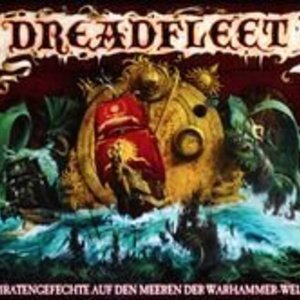
Dreadfleet
Tabletop Game
For two bleak decades the Undead reavers of Count Noctilus have plagued the oceans of the world....
Boardgames Miniaturegames
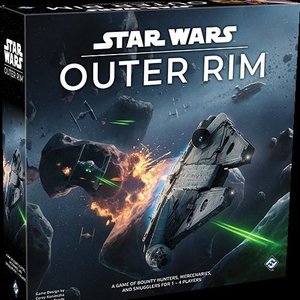
Star Wars: Outer Rim
Tabletop Game
Take to the stars and become a living legend in Star Wars: Outer Rim, a game of bounty hunters,...
2019Games StarWarsGames
Matthew Krueger (10051 KP) rated Mario Party 3 in Video Games
Feb 5, 2021
The game features duel maps, where two players try to lower each other's stamina to zero using non-player characters such as Chain Chomps.
Mario and his friends witness the descent of the Millennium Star, a mystical star born once every thousand years that allows whoever possesses him to become the "Superstar of the universe". When the group begins to debate the Star's ownership, the Star transports the group into a large toy box and proclaims that the group members must prove their worthiness and earn the Millennium Star's acceptance by collecting the seven "Star Stamps" scattered across several lands.
Green spaces marked with a Shy Guy initiate a single-player Game Guy mini-game, in which the player may either win a multiplied amount of their coins or lose all of their coins
The players can obtain items for use on the board, and can each carry up to three at a time.
Mario Party 3 includes a Duel mode, in which two players use a selection of up to two partners to attack their opponent and deplete their health. The partners can be positioned in front of or behind the player,[and must be paid a salary at the beginning of each turn; the partner will leave if their salary cannot be paid. The partners do the battling to reduce the opponent's health, and defend the player from incoming attack. Each partner has its own health, and if it reaches zero, they disappear, and if the attacking partner deals more damage than the defending partner can take, the player takes damage equal to the difference.
In the Story Mode to the series, one player starts a campaign through every board, challenging computer controlled opponents at a shortened version of Party Mode. The player's objective is to defeat the other characters and earn stamps from the Millennium Star. After all seven stamps are acquired the player is challenged to a final duel with the Millennium Star, in which the player must hit the Millennium Star three times (six times on Normal difficulty and nine on Hard difficulty) with stars in order to defeat story mode. Each time the player completes an objective, they are given a rank of S to C depending on how well they completed that objective. When all the objectives have been completed, a title representing the player's overall progress in the game is awarded. This is determined by the ranks they earned for each objective. If enough "S" ranks are acquired, that character becomes a "Miracle Star" and the Game Guy Room in the Mini Game House is opened for use. Simply beating the Story Mode and not earning a high title will cause the character's face to be sculpted into the mountain.
Its a fun game and the last of the N64 triolgy.
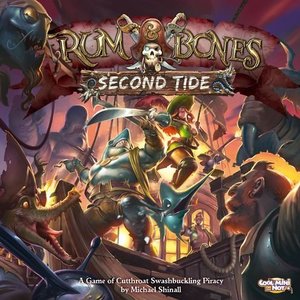
Rum and Bones: Second Tide
Tabletop Game
Avast ye pirates! Gather your crews and set sail for adventure on the high seas in Rum & Bones:...
2017Games Boardgames PirateGames
Purple Phoenix Games (2266 KP) rated Quests & Cannons in Tabletop Games
May 17, 2021
Quests & Cannons is a giant melting pot of mechanics rolled up into a cute little package with an interesting modular board with multiple setup options. In it, players take control of one of the aforementioned animal races and board their ships to claim islands and exploit their resources. The first player to amass 15 or 20 prosperity (VP) by the end of the game will reign victorious!
DISCLAIMER: We were provided a prototype copy of this game for the purposes of this review. These are preview copy components, and I do not know for sure if the final components will be any different from these shown. Also, it is not my intention to detail every rule in the game, as there are just too many. You are invited to download the rulebook, back the game through the Kickstarter campaign, or through any retailers stocking it after fulfillment. -T
There are so many steps to setup, and about a thousand bits and pieces, so I will save both your eyes and my fingers explaining. However, once setup, it should look somewhat similar to the photo below. Each player receives their own upgradeable ship board to track resources, action points, and other game-necessary components, along with a specific character and matching boat token.
On a turn, players will have three action points they may spend in any order on the following actions: Movement, Gather, Attack. Movement is one nautical hex in any direction per action point used, unless a player uses one of their sails. Sails add one hex to a movement and is spent for the rest of the round. The thing to keep in mind with movement is that different tiles affect movement in different ways, so luckily reference cards are included in the game. Once a ship discovers a new island, the player receives one coin and a Quest card in addition to flipping over the question mark Island Feature Tokens. These tokens show specific resources, which Quest cards require to be completed, at specific locations on the board.
Players can spend an action point to Gather resources from an island. Players are able to fill up their ships’ holds with as much of the resource as they wish, and it can be replaced with other resources on future turns.
Map Clues are cards that can be worked on during play, similar to Quest cards, and usually require an action point to be spent. These are special circumstances, and the action points are not available to be spent on every turn. Similar special circumstances include visits to Outposts, Trading Posts, and Starting Spaces. These spaces allow players to buy and sell items, and upgrade and repair ships.
The last option for action point spending is by attacking. A player may Attack another player when they share the same space on the board. The attacking player spends an action point to fire their cannons equipped on their ship. The ammo is tracked and represented by ammo dice. Once rolled, the attacker scores hull damage for every four pips rolled. If the ship takes as many or more hull damage than they have HP hearts, their ship sinks. Fortunately, this does not eliminate the player, but they lose many resources and coins, and will need to respawn at their starting location.
The player who earns 15 or 20 prosperity (depending on game mode) from attacking players, completing Quest and Map Clue cards, and possibly some other secret methods, will win Quests & Cannons and leads their race to eternal glory!
Components. Again, this is a prototype copy of the game, but I’ll tell you what, if the finished project comes with even slightly better components, it will be a monumental accomplishment. This is one of the highest-quality home-made prototypes I have ever received. I know most art and many items are final, but everything is on the table for upgrades, with a successful Kickstarter campaign. The colors are great, the art is fantastical and amazing, and it looks phenomenal on the table. I really enjoy the different characters with their unique special powers, and the double-layer ship player mats. Everything has its place and is organized beautifully. I am very excited to see the final product that Short Hop Games achieves!
This kind of game is really right up my alley: head-to-head combat (without player elimination), exploration, and pick-up-and-deliver. The only thing this is missing to be the perfect Travis game is a deck building element, but that certainly wouldn’t fit here. Quests & Cannons is chocked full of mechanics that, I believe, work really well together to provide a great game experience without adding a ton of complexity. The hexploration is strong, and the pick-up-and-deliver mechanic is tasty. All the mechanics, components, and artwork synergize so well that I am surprised this is a title from first-time designers and publisher.
What I like most is that though the rules are plentiful, once you get them down you have a wonderfully fun versatile game that can be played with many different group permutations and modes. The variety in setup options are endless, and the rulebook offers nine or ten different setups. The game also comes with lots of extra map bits, so any player could dream up several unique setup options at any time. The Quests are great, and the Loot cards (though I didn’t mention them in the overview) offer lots of ways to improve players’ strategies. With the abundance of upgrades available and unique special powers, this one is a big winner for me.
If you are in the market for something a little different, with a great theme and interesting combination of mechanics, then Quests & Cannons is certainly worth a look. I am very excited to follow the progress and the campaign for this one. I think backers will be receiving an incredible game with excellent components and tons of replayability. Now to challenge my wife so she can mop the poop deck with me.
Purple Phoenix Games (2266 KP) rated Isla Dorada in Tabletop Games
Jun 24, 2021
Isla Dorada is a set collection, hand management, bidding, exploration, adventure card and board game from a team of designers including Bruno Faidutti and Alan R. Moon. The players are a cohesive exploration team which has crash landed on an island, and they seek the riches within. To do this, the players will be traveling around the island attempting to satisfy their Destinies and pick up treasures along the way. But not every player wants to go where the others want to go. What to do, what to do…
Follow the setup instructions in the rule book until you have a board with turn tracker discs and the players’ shared totem pawn upon the crash site. Each differently-backed card deck will be shuffled and each player will receive cards drawn from these decks as their starting collection. The youngest player will receive the first player marker and will start the game by placing the totem on a path heading away from the crash site where they would like to go and announce the amount of cards they are willing to bid (even zero cards) in order to convince the party to travel there. The game is now on!
Players will be collecting Adventure cards to be used as currency when bidding on party travel in order to fulfill goals on their personal Destiny cards. When traveling each turn, a turn marker disc will be placed on the location the party has visited in order to track the movements for said Destiny cards, which mostly have lists of areas to be visited. They will also be attempting to avoid certain areas of the island which will trigger their Curse card that awards negative points at the end of the game. During two turns of the game players will be able to draw and choose cards from the Treasure deck that will help award points at game end as well. The winner is the player who best collects a combination of completed Destiny cards, Treasures, money, and considerations for negative points from Curses.
Components. People, Isla Dorada boasts some of the best components in a game we have seen. The totem pawn and Bigfoot/Leviathan pawns are simply amazing. The art throughout the game is mesmerizing and gorgeous. So much attention to little details have gone into this production and the final product is a stunning game that you want to keep playing because the component are just so fabulous.
But the game play? It is awesome with the right game mates. If you can play this with your enthusiastic friends, each turn will be simply exciting and joyous to play. Getting friends and family members to shout at each other their bids to move the party toward Septris instead of Methritis because their Curse card is brutal is downright great entertainment. Watching paths being cut off by the Bigfoot and Leviathan and having people visibly create alternate pathways and tactics can be enjoyable as well.
So do I like this game? Yep! It has beautiful components, is somewhat easy to teach to players of all experience levels, and leaves you satisfied when the game is over. This is not a serial, “play every game night” sort of title, but with the right group and mood, this can be a dynamite experience. If you are looking for a high-energy adventure game with lots of player interaction, set out to find a copy. I do wish you good luck, though, as a copy may be hard to come by. Alas, Purple Phoenix Games gives Isla Dorada a totemic 15 / 18. At least we will always have Kilitiping…
Purple Phoenix Games (2266 KP) rated Dodos Riding Dinos in Tabletop Games
Apr 7, 2020
Dodos Riding Dinos is a hand management, dexterity, racing card game where if while you are playing it you don’t feel like you have portaled into a prehistoric Mario Kart board game, you have missed the point.
DISCLAIMER: We were provided a prototype copy of this game for the purposes of this review. These are preview copy components, and I know the final components will be a little different from these shown (upgrades!). Also, it is not my intention to detail every rule in the game. You are invited to download the rulebook, back the game through the Kickstarter campaign beginning April 28, 2020, purchase it from your FLGS, or through any retailers stocking it after fulfillment. -T
To setup, lay out the board in the middle of the table. Randomly deal each player a Dodo/Dino team card, give them the corresponding team player dodineeple, and deal each six cards. Place the meteoreeple, eggeeple, and bananeeple (jeepers) within reach. Determine the starting player order, placing the dodineeples on the corresponding hexes behind the starting line. The game can now begin!
Dodos Riding Dinos is played over a series of rounds until one player has either surpassed the finish line or is the furthest past the finish line at the end of the round. To accomplish this, Dinos will be moved using the cards dealt at the beginning of the game and that are drawn from the deck during play. There are three colors (types) of cards: blue (normal), red (aggressive), and green (fast). During a round, players will choose a red or blue card to be played. Once all have chosen, the cards are revealed simultaneously. Whomever has the active player marker will resolve their card first, moving their dino the number shown on the top of the card and resolving any special abilities on the bottom of the card. The round will continue this way around the table until every player has resolved their card.
That is, unless two or more players have revealed red cards during the round. When this happens, these dinos are enraged and can only move, canceling out any special abilities printed on the bottom of the cards. If a red card gets through, however, get ready for the crux of the game.
Usually these cards are those that introduce the dexterity element of the game. If a card mentions throwing a banana “with a damage of 2,” then the player will grab the bananeeple, anchor their elbow to the table, and try to throw the banana onto their opponents with a wrist flick. Those that are hit will take 2 damage, where damage is discarding cards from their hand. Should a player enact a card involving throwing the eggeeple, the player will move their piece aside, place the egg there, and flick the egg to the opponents without the assistance of thumb resistance. And finally, the meteor. To unleash the meteor’s fury, the player will hold the meteoreeple in their fist, hold their arm parallel to the game board at least 1ft above the surface, and drop the meteoreeple onto unsuspecting foes causing massive damage.
Play continues in this fashion until only one player has crossed the finish line at the end of a round or the winner is the player who is furthest past the finish line when the round is over.
Components. Again, this is a prototype that was sent to us so I cannot rightfully comment on the quality of components, but I can on the art style and direction. So I really love the presentation of the components. The game is colorful, and the art is cartoony and super-quirky, a style of which I am always a fan. I’m excited to see how these components will be upgraded as a result of a successful Kickstarter campaign, but even as is, the game is gorgeous and the components are fun to handle.
It is probably no surprise that I love this one. It is super simple to learn, gives the players tons of choices per round, and perfecting the meteor drop or egg flick is going to take lots of plays, so that’s a big winner for me. I was telling the publisher that even though the box recommends ages 8+ to play, we were able to fashion some house rules to allow our 3 year old to play and have fun with it. Simply play open-handed, with no special dino abilities, and give them endless mulligans. Works for us, but the original rules are even better for adults.
So if you are a fan of games where dinosaurs are involved, or dodos, or animals riding other animals, or dexterity games, then definitely check out Dodos Riding Dinos on Kickstarter. I think that I will be backing the deluxe version because I’m a sucker for KS upgrades and content. It’s a great game as long as you don’t take yourself too seriously and just have a great time flicking eggs and meatball meeples at each other.
